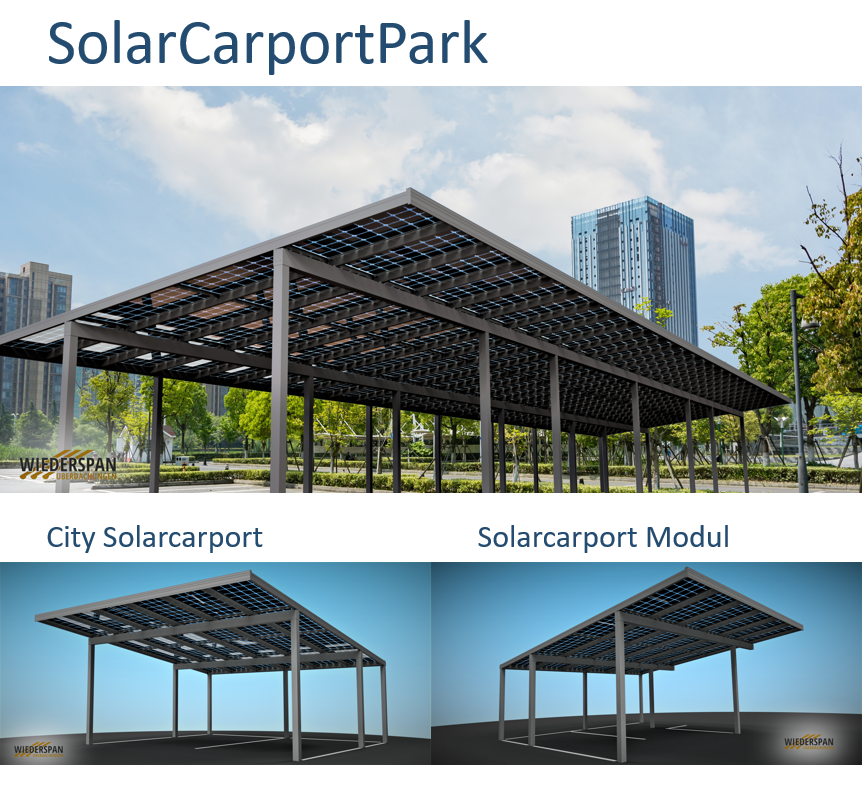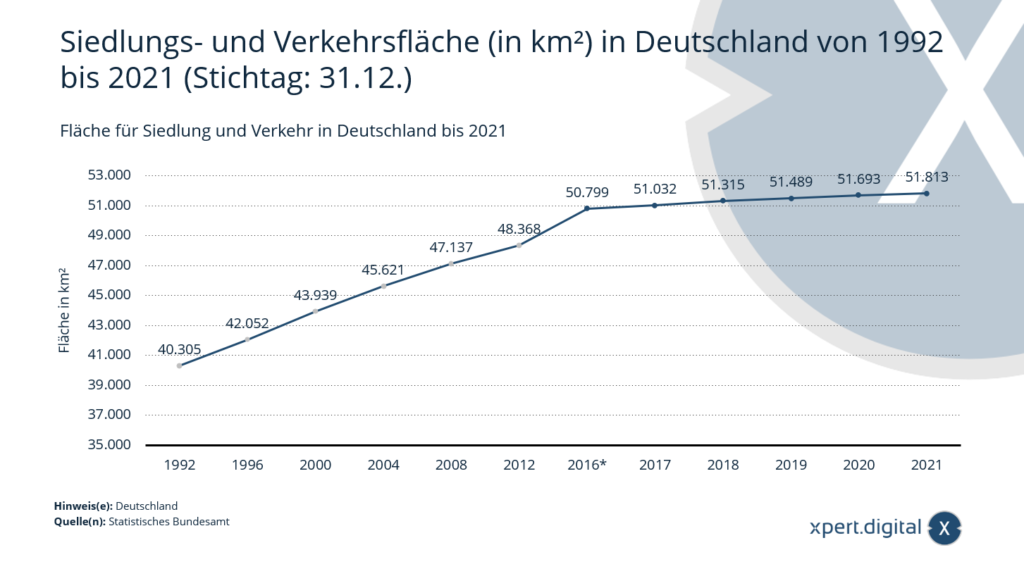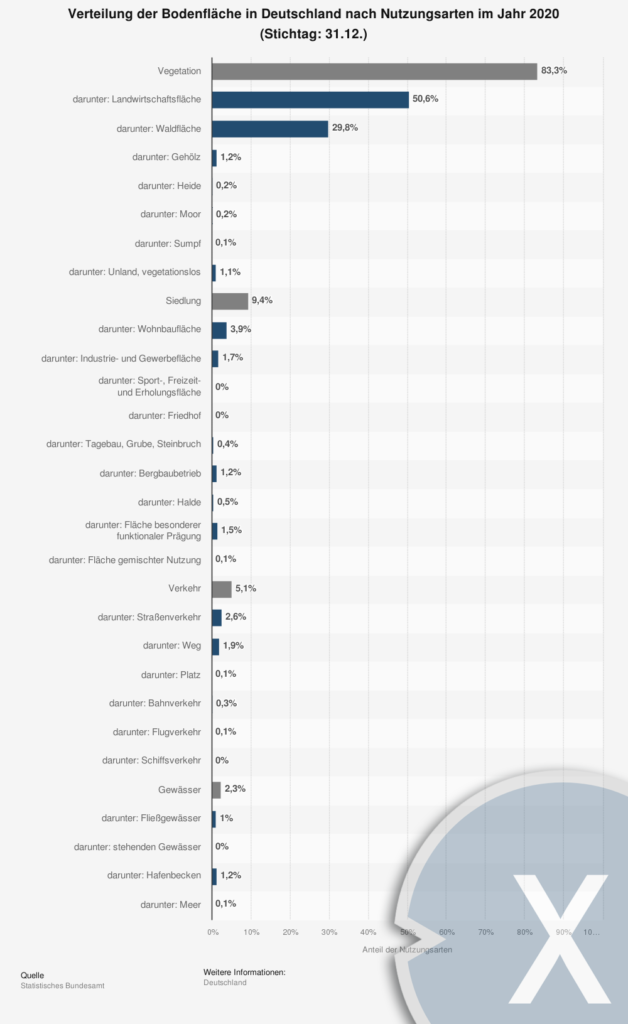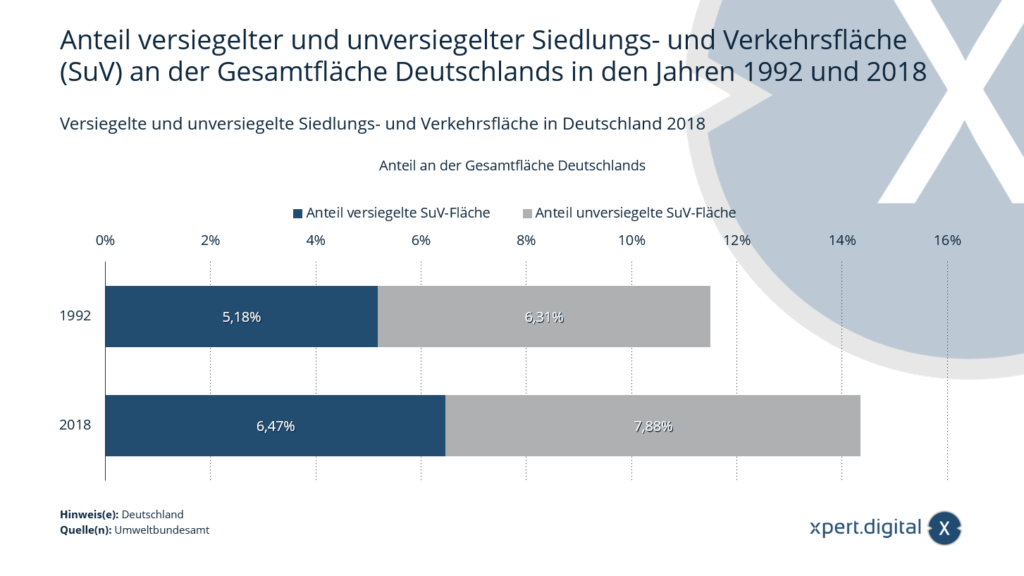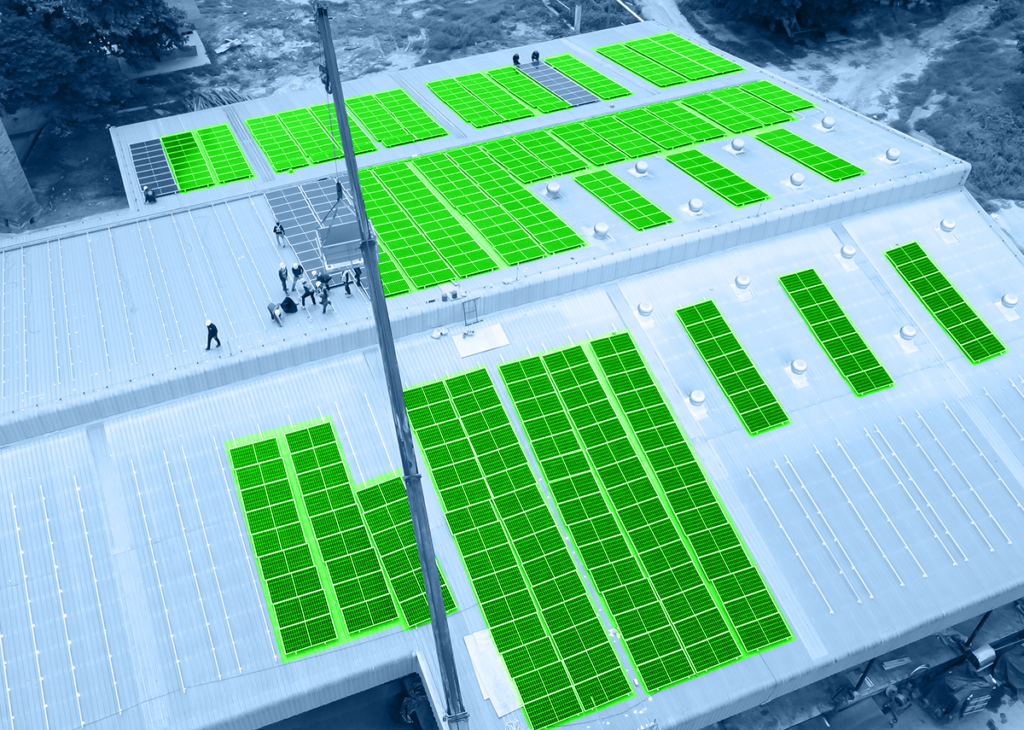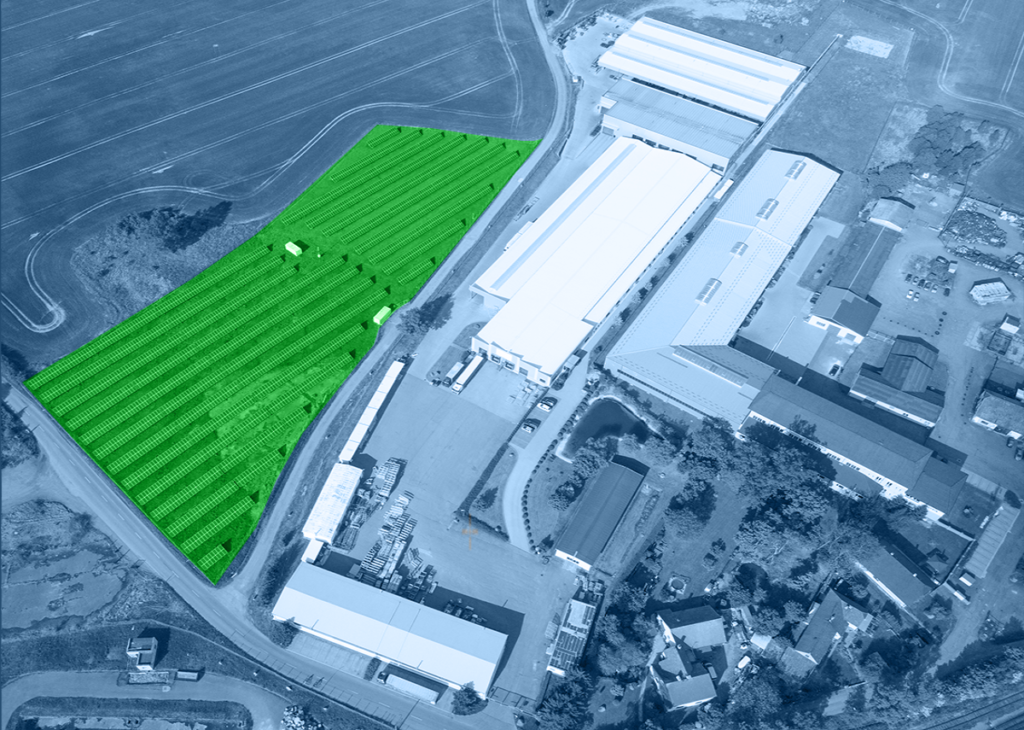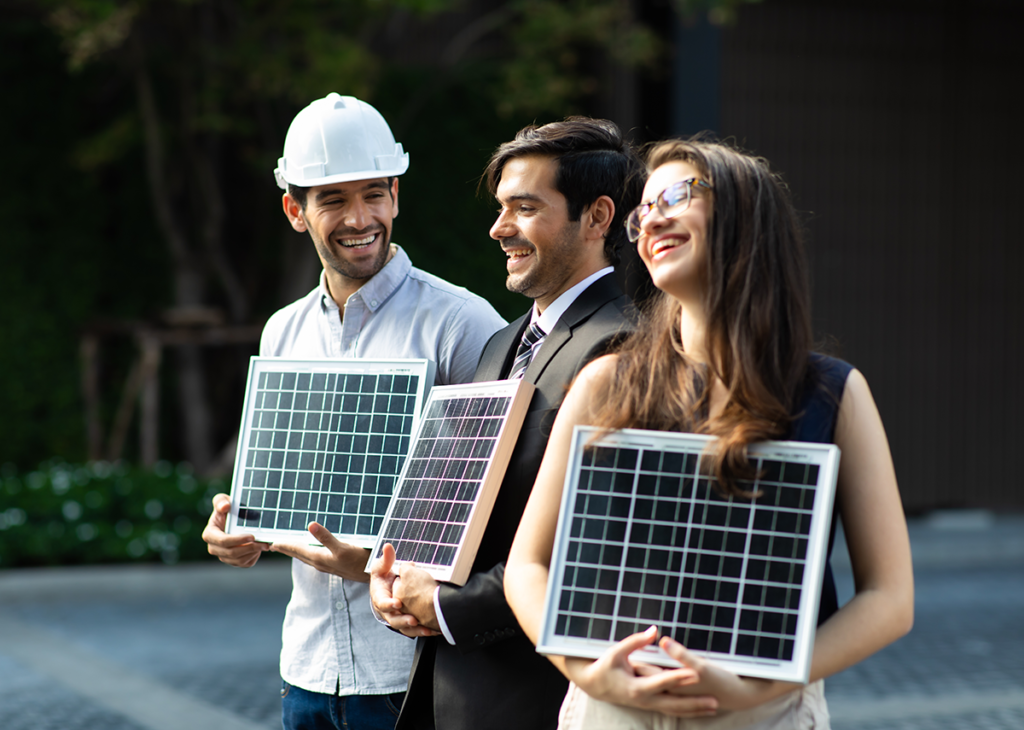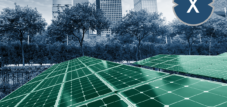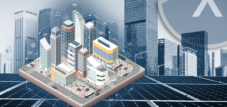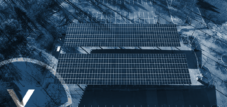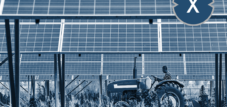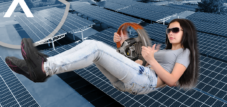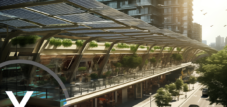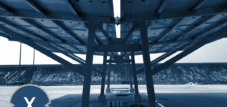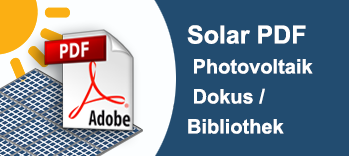BIPV & Urban City solar carport system: Use solar carport systems to expand settlement and traffic areas and protect important agricultural resources
Language selection 📢
Published on: May 17, 2023 / update from: May 23, 2023 - Author: Konrad Wolfenstein
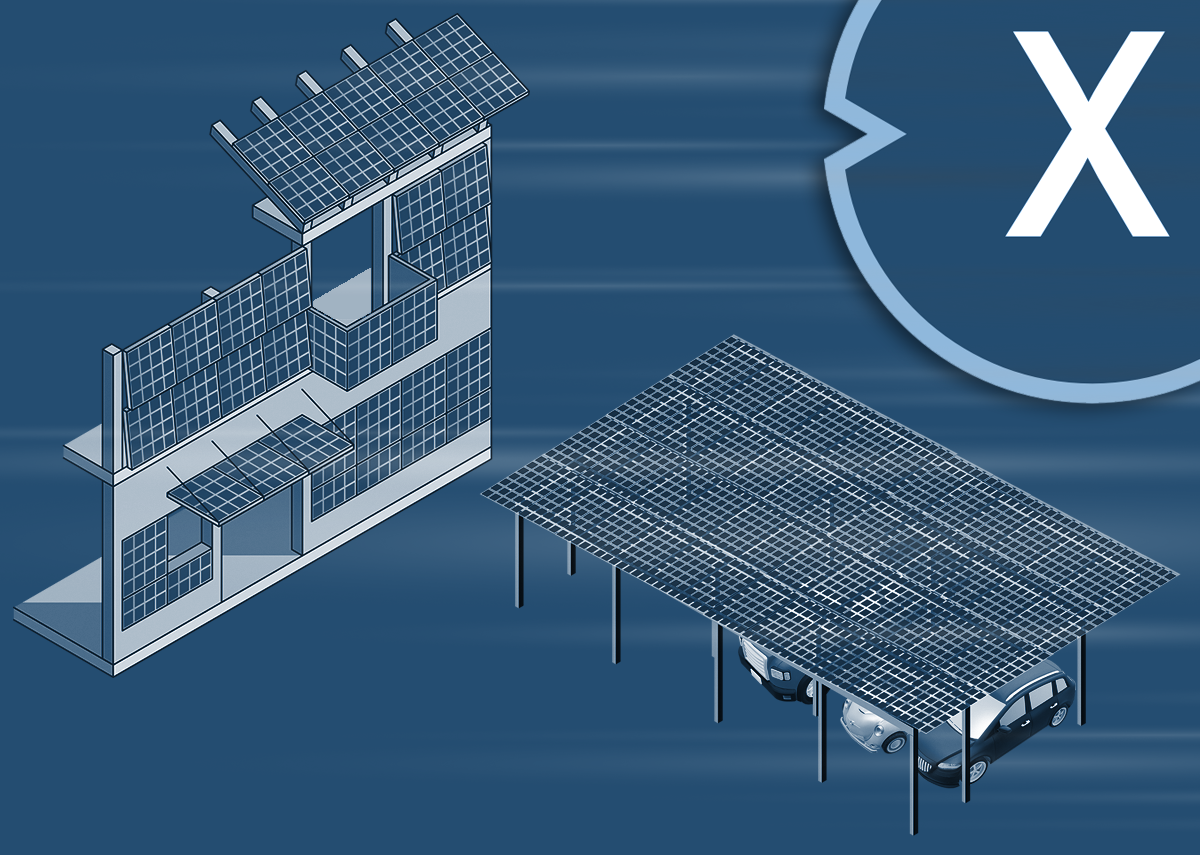
BIPV-Building-integrated photovoltaics: Expand sealed areas with our 'Urban City SolarCarport system system'-Image: Xpert.digital
BIPV: Are solar carports part of building-integrated photovoltaics?
Solar carports are generally not part of building-integrated photovoltaics (BIPV: Building-Integrated Photovoltaics). With building-integrated photovoltaics, solar modules are integrated into the building shell, for example as facade elements, roof tiles or windows. The goal is to seamlessly integrate the solar panels into the building design to achieve both aesthetic and energy benefits.
Solar carports, on the other hand, are canopies designed specifically for parking vehicles while also being equipped with solar panels to generate solar energy. Their primary purpose is to protect vehicles from the elements and at the same time generate electricity from sunlight.
Although solar carports are not part of building-integrated photovoltaics, they can still be a useful addition to a building by providing additional space for electricity generation while supporting the environmental aspect through the use of renewable energy sources.
Solar carport park - Our favorite city solar carport module is part of building-integrated photovoltaics!
The city solar carport module is characterized by its partial transparency, which allows the solar modules, roof and power generation to be combined in a single integrated system. This expansion of tasks and increased functionality are crucial features of a solar carport as a building-integrated photovoltaic solution.
By integrating the solar modules into the carport roof, not only is renewable energy generated, but it also creates an aesthetically pleasing solution that fits harmoniously into the urban living environment. The transparent elements of the city solar carport module continue to let natural light through and create a pleasant atmosphere. Even greenery underneath the solar carport is possible!
The aesthetic integration of solar carports into urban areas has a positive impact on the quality of life and acceptance of citizens. They help ensure that renewable energy technologies are integrated into the cityscape and thus contribute to sustainable and future-proof urban development.
The combination of functionality, aesthetic design and renewable energy production makes the city solar carport module an attractive solution for residential and commercial areas. It enables the use of sealed surfaces and at the same time creates a clean energy source for your own needs or for charging electric vehicles.
The advanced technology and modern design of the city solar carport module therefore offers a win-win situation: it contributes to sustainability and environmental protection while improving the urban ambience and the quality of life of residents.
More about it here:
Add additional functionality to settlement and traffic areas and protect important agricultural resources with building-integrated photovoltaics
Building-integrated photovoltaics can help add further functionality to settlement and traffic areas while protecting important agricultural resources. By integrating solar modules into the building shell, they can efficiently use existing areas without taking up additional space.
By integrating solar modules into building structures such as facades, roof tiles or windows, urban areas can be used multifunctionally. This enables electricity to be generated on site, which contributes to a decentralized energy supply. At the same time, agricultural land can be protected and preserved for its original use instead of being used to build solar systems.
Building-integrated photovoltaics also offer aesthetic benefits as the solar modules can be seamlessly integrated into the building design. This will promote the acceptance of solar energy in urban areas and improve the aesthetic appearance of the city.
By combining solar energy with building-integrated photovoltaics, several advantages can be achieved, such as the use of existing land, decentralized energy production and the protection of agricultural resources. It is an innovative way to promote sustainability and renewable energy in urban environments.
Suitable for:
Proportion of sealed settlement and traffic areas in urbanized areas
The proportion of sealed settlement and traffic areas in urbanized areas can vary greatly depending on the country, city and region. However, there are some general estimates and data that can provide an overview of the extent of sealing in urban areas.
In Germany, the Federal Statistical Office estimated in 2018 that around 13.3% of the area in urbanized Germany was used as settlement and transport space. This includes residential areas, commercial areas, industrial areas, traffic areas such as streets and parking lots as well as leisure and recreational areas.
Internationally, there are differences between different countries and cities. For example, some highly urbanized countries such as Singapore have a very high impervious rate with more than 90% impervious area due to limited land resources. Other cities such as Amsterdam in the Netherlands have set themselves the goal of reducing the amount of impervious surfaces and creating more green spaces and natural habitats.
It is important to note that high imperviousness can have negative impacts on urban microclimate, biodiversity and quality of life. Urban planning and sustainable urban development are therefore of great importance in order to limit sealing and increase the proportion of green spaces.
Urbanization – a global development
Urbanization refers to the process of population concentration and increasing growth of cities. It refers to the transition from a predominantly rural society to one in which the majority of people live in cities. Urbanization is accompanied by various social, economic and spatial changes.
As urbanization progresses, people move from rural areas to urban regions in search of better employment, education and living conditions. This process is often driven by the industrialization and economic development of a country or region. Cities provide access to a variety of services, infrastructure, cultural amenities and opportunities for social interaction.
However, urbanization can also bring challenges. These include high population density, lack of housing supply, traffic congestion, environmental pollution, social inequality and problems related to infrastructure and utilities.
Urbanization is a global trend that can be observed in many parts of the world. Particularly in emerging and developing countries, urbanization is often associated with rapid population growth, meaning cities face challenges in providing infrastructure and services.
Sustainable urbanization involves the planning and development of cities to improve the quality of life of residents, use resources efficiently, minimize environmental impacts and promote social justice.
Further impact of urbanization: Urban heat islands (UHI)
Suitable for:
Theory: To supply Germany with 100% solar power
In order to supply Germany with 100% solar power, a certain installed capacity in gigawatt peak (GWp) is required. The exact amount depends on several factors, such as electricity consumption, the efficiency of the photovoltaic systems and the average solar radiation in different regions of Germany.
It is difficult to give a precise indication of the GWp number required to cover Germany's entire electricity needs with solar power, as electricity consumption can change over time and other factors must also be taken into account.
According to a 2018 study by the Fraunhofer Institute for Solar Energy Systems, area-related electricity generation with photovoltaics of around 400-500 GWp would be required to cover the entire electricity demand in Germany.
However, it is important to note that this is a rough estimate and that the exact GWp requirement may change over time as technology, energy efficiency and electricity consumption evolve. It is also possible that other renewable energy sources, such as wind or hydropower, combined with solar power, could help meet overall demand.
Theory: Necessary area size for 100% solar power supply
In order to make a rough estimate of the required area, one can assume an average output of 5 watt peak per square meter. This means that up to 80,000 square kilometers (80,000,000,000 square meters) of space could be required for 400 GWp.
However, it is important to note that this is a simplified calculation and other factors such as technical progress in photovoltaic systems, the expansion of storage technologies and the optimization of energy efficiency must be taken into account. The exact area can therefore change depending on how the technology and the general conditions develop.
Settlement and traffic area (in km²) in Germany
The statistics illustrate the development of settlement and traffic areas in Germany from 1992 to 2021. They provide information about the increasing expansion of these areas during the period mentioned. In 2021, the area for settlement and traffic areas in Germany amounted to around 51,813 km². Settlement areas accounted for approximately 9.4 percent of the total land area in 2020.
Advancing urbanization and population growth have led to increased demand for settlement areas. Residential areas, commercial areas, industrial areas and transport infrastructure such as roads and parking lots take up a significant proportion of Germany's total area.
However, this development also has an impact on natural habitats, agricultural land and ecologically valuable areas. The protection of these resources is of great importance in order to preserve biodiversity and minimize the ecological footprint of settlement and traffic areas.
Sustainable urban planning and efficient use of the available space are crucial in order to contain the negative consequences of increasing sealing. Concepts such as interior development, the promotion of green infrastructure and the revitalization of brownfields can help limit land consumption while creating a livable environment for the population.
It is important to keep an eye on the development of settlement and transport areas and to take measures to find the balance between urban growth and the protection of natural resources.
Settlement and traffic area (in km²) in Germany from 1992 to 2021 (reference date: December 31)
- 1992 – 40,305 km²
- 1996 – 42,052 km²
- 2000 – 43,939 km²
- 2001 – 44,381 km²
- 2002 – 44,780 km²
- 2003 – 45,141 km²
- 2004 – 45,621 km²
- 2005 – 46,050 km²
- 2006 – 46,436 km²
- 2007 – 46,789 km²
- 2008 – 47,137 km²
- 2009 – 47,422 km²
- 2010 – 47,702 km²
- 2011 – 48,133 km²
- 2012 – 48,368 km²
- 2013 – 48,597 km²
- 2014 – 48,910 km²
- 2015 – 49,066 km²
- 2016 – 50,799 km²
- 2017 – 51,032 km²
- 2018 – 51,315 km²
- 2019 – 51,489 km²
- 2020 – 51,693 km²
- 2021 – 51,813 km²
Proportion of sealed and unsealed settlement and traffic areas (SuV) in the total area of the federal states in Germany
In 2018, no federal state had such a high proportion of sealed areas as Berlin. A whopping 34.64 percent of the capital's total area consisted of sealed settlement and traffic areas. The other two city states, Hamburg and Bremen, had shares of 29.13 percent and 28.1 percent, respectively, of sealed settlement and traffic areas. The thirteen territorial states followed at a considerable distance, but showed significant differences. In North Rhine-Westphalia, for example, 10.8 percent of the total area consisted of sealed settlement and traffic areas, while in Mecklenburg-Western Pomerania it was only 3.51 percent.
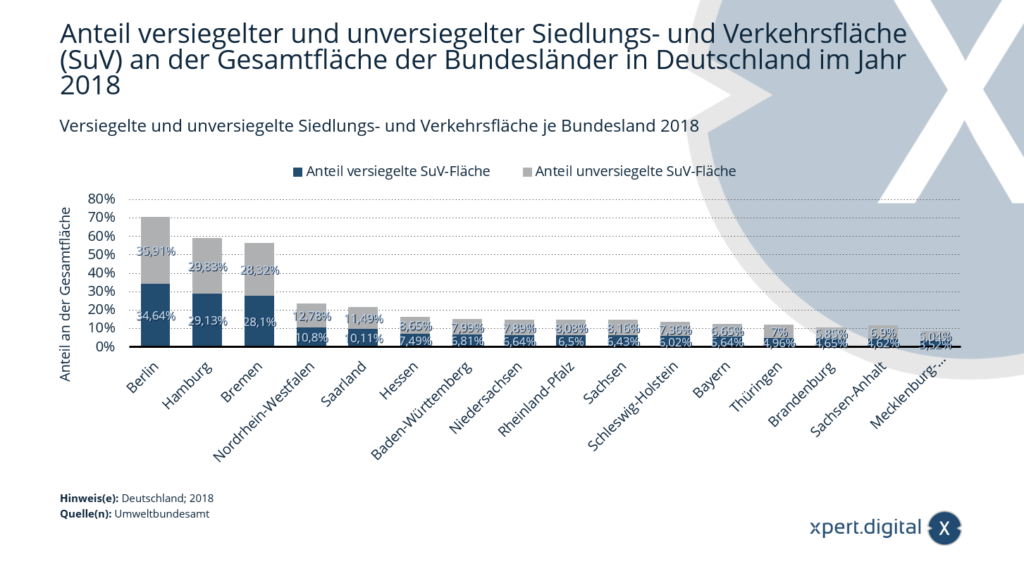
Proportion of sealed and unsealed settlement and traffic areas (SuV) in the total area of the federal states in Germany in 2018 - Image: Xpert.Digital
The sealing of areas has far-reaching effects, both ecologically and hydrologically. On the one hand, fertile soil is lost due to sealing, which has a negative impact on agricultural use and soil quality. This poses a challenge for food production and biodiversity conservation.
On the other hand, increasing sealing is a relevant factor in the occurrence of floods and increases the risk of such events. Since precipitation cannot seep away on sealed soils, the water collects in other places and leads to an increase in the amount of water in sewers and waterways. This has negative consequences for the infrastructure, the environment and the security of the affected areas.
It is therefore very important to take measures to reduce surface sealing urban heat islands Sustainable urban planning, the promotion of green spaces, the conversion of sealed areas into green and open spaces, and the implementation of effective stormwater management systems are crucial to counteract the negative consequences of sealing and create a resilient and livable environment.
Proportion of sealed SuV area
- Berlin – 34.64 in %
- Hamburg – 29.13 in %
- Bremen – 28.10 in %
- North Rhine-Westphalia – 10.80 in %
- Saarland – 10.11 in %
- Hesse – 7.49 in %
- Baden-Württemberg – 6.81 in %
- Lower Saxony – 6.64 in %
- Rhineland-Palatinate – 6.50 in %
- Saxony – 6.43 in %
- Schleswig-Holstein – 6.02 in %
- Bavaria – 5.64 in %
- Thuringia – 4.96 in %
- Brandenburg – 4.65 in %
- Saxony-Anhalt – 4.62 in %
- Mecklenburg-Western Pomerania – 3.52 in %
Proportion of unsealed SuV area
- Berlin – 35.91 in %
- Hamburg – 29.83 in %
- Bremen – 28.32 in %
- North Rhine-Westphalia – 12.78 in %
- Saarland – 11.49 in %
- Hesse – 8.65 in %
- Baden-Württemberg – 7.99 in %
- Lower Saxony – 7.89 in %
- Rhineland-Palatinate – 8.08 in %
- Saxony – 8.16 in %
- Schleswig-Holstein – 7.36 in %
- Bavaria – 6.65 in %
- Thuringia – 7 in %
- Brandenburg – 5.85 in %
- Saxony-Anhalt – 6.90 in %
- Mecklenburg-Western Pomerania – 5.04 in %
Distribution of floor space in Germany by type of use in 2020
Vegetation covers most of Germany's surface area and comprised over 83 percent of the total area at the end of 2020. This includes various types of land use, including agricultural land. In fact, just over half of the total land area in Germany is used for agricultural purposes.
In 2020, settlement areas accounted for around 9.4 percent of the total land area. This includes urban areas, residential areas, commercial areas and infrastructure such as roads and parking lots. The increasing settlement area is a result of urbanization and population growth.
The distribution of land use impacts various aspects, including agriculture, nature conservation and the environment. Sustainable land use is crucial to protect natural resources, preserve biodiversity and minimize the ecological impact of settlement areas.
It is important to consider the balance between vegetation areas, agricultural uses and settlement areas in order to promote sustainable development. This requires the efficient use of agricultural land, the promotion of ecological compensation areas in settlement areas and the implementation of measures that preserve the ecological integrity of the soil. By using land responsibly, we can ensure the long-term health of our environment and communities.
Types of use of floor space in Germany 2020
Vegetation – 83.30 in %
- including: agricultural area – 50.60 in %
- including: forest area – 29.80 in %
- below: woody plants – 1.20 in %
- below: heather – 0.20 in %
- below: Moor – 0.20 in %
- below: sump – 0.10 in %
- including: waste land, without vegetation – 1.10 in %
Settlement – 9.40 in %
- including: residential building area – 3.90 in %
- including: industrial and commercial space – 1.70 in %
- including: sports, leisure and recreation area – 0 in %
- below: Cemetery – 0 in %
- including: opencast mining, pit, quarry – 0.40 in %
- including: mining operations – 1.20 in %
- below: stockpile – 0.50 in %
- below: Area of special functional character – 1.50 in %
- below: mixed-use area – 0.10 in %
Traffic – 5.10 in %
- including: road traffic – 2.60 in %
- below: Distance – 1.90 in %
- below: place – 0.10 in %
- including: rail traffic – 0.30 in %
- including: air traffic – 0.10 in %
- including: shipping traffic – 0 in %
Waters – 2.30 in %
- including: rivers – 1 in %
- below: standing water – 0 in %
- including: harbor basin – 1.20 in %
- below: sea – 0.10 in %
Sealed and unsealed settlement and traffic areas in Germany 2018
Between 1992 and 2018, the proportion of sealed settlement and traffic areas in Germany increased from 5.18 percent to 6.47 percent. This means that there was an increase of 4,622 square kilometers or about 178 square kilometers per year during this period. At the same time, the unsealed settlement and traffic area increased to the same extent from 6.31 percent to 7.88 percent. In 2018, the total settlement and traffic areas accounted for 14.35 percent of Germany's total area.
Proportion of sealed and unsealed settlement and traffic areas (SuV) in the total area of Germany in 1992 and 2018
Proportion of sealed SuV area
- 1992 5.18 in %
- 2018 6.47 in %
Proportion of unsealed SuV area
- 1992 6.31 in %
- 2018 7.88 in %
Did you already know? Our solar carport planner is also available to you as a white label solution
If a carport or a prefabricated garage is planned, then Xpert.Solar can be used competently and completely to implement it.
Xpert.Solar offers competent and complete implementation of photovoltaic systems in carports and prefabricated garages. The company specializes in the planning, installation and maintenance of solar systems and works closely with customers to find individual solutions. With Xpert.Solar, customers can be sure that their solar systems are professionally planned and installed and that they can get the maximum benefits from their investments.
Because solar experts lack the know-how for carport substructures and carport substructure experts lack the know-how for photovoltaics, Xpert.Solar and its partners offer everything from DC installation to AC, depending on your needs /DC implementation.
For large solar carport systems, Xpert.Solar provides advice and planning with its partners and many years of experience.
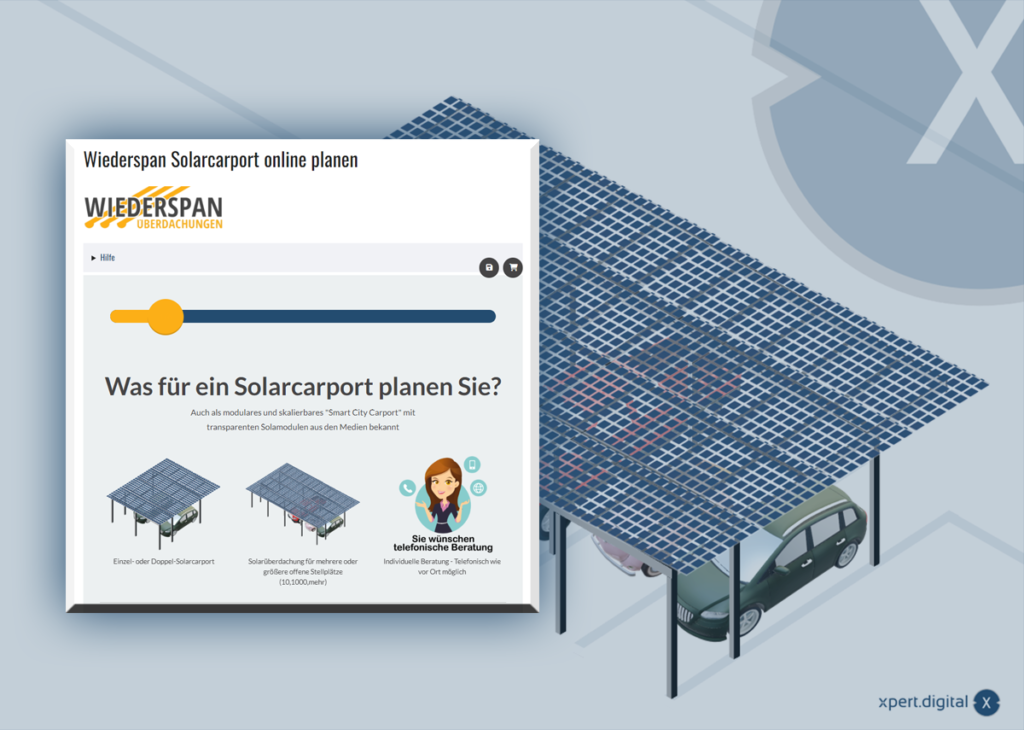
Free solar carport and solar terrace planner for construction, electrical companies and solar engineers - Image: Xpert.Digital
More about it here:
- Warehouses, production halls and industrial halls with their own power source from a photovoltaic roof system - Image: NavinTar|Shutterstock.com
- Industrial plant with its own power source from an outdoor photovoltaic system - Image: Peteri|Shutterstock.com
- Plan solar systems with photovoltaic solutions for freight forwarding and contract logistics
- B2B solar systems and photovoltaic solutions & advice
- Plan photovoltaics for warehouses, commercial halls and industrial halls
- Industrial plant: Plan a photovoltaic open-air system or open-space system
- Plan solar systems with photovoltaic solutions for freight forwarding and contract logistics
- B2B solar systems and photovoltaic solutions & advice
From simple solar carports to large systems: With Xpert.Solar your individual solar carport advice - the combination of durable aluminum and semi-transparent solar modules with performance guarantees of 30 years
I would be happy to serve as your personal advisor.
You can contact me by filling out the contact form below or simply call me on +49 89 89 674 804 (Munich) .
I'm looking forward to our joint project.
Xpert.Digital – Konrad Wolfenstein
Xpert.Digital is a hub for industry with a focus on digitalization, mechanical engineering, logistics/intralogistics and photovoltaics.
With our 360° business development solution, we support well-known companies from new business to after sales.
Market intelligence, smarketing, marketing automation, content development, PR, mail campaigns, personalized social media and lead nurturing are part of our digital tools.
You can find out more at: www.xpert.digital – www.xpert.solar – www.xpert.plus



